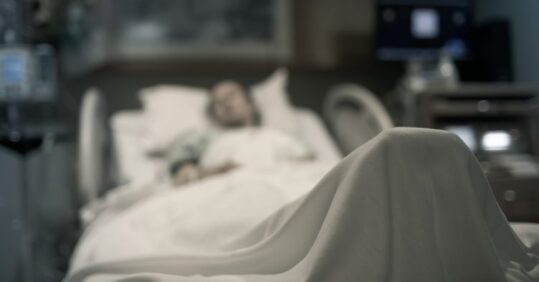‘Healthcare workers seven times as likely to have severe Covid-19′

Healthcare workers have a seven-times increased risk of having severe Covid-19 as those with non-essential jobs, while those working in social care are two-and-a-half times as likely, research has found.
The University of Glasgow researchers said the findings demonstrated the importance of adequately protecting healthcare workers through health and safety standards, and PPE.
Related Article: New digital support for community nurses in 10-year plan
The study compared 120,075 essential and non-essential workers using data from the UK Biobank – a long-term study tracking the development of disease in around half a million adults aged 49 to 64 – as well as Public Health England Covid-19 test results.
For those in health and social care posts, the higher risk of severe infection – defined as being hospitalised or dying with the virus – was linked to their jobs rather than socioeconomic circumstances, it found.
The study concluded: ‘Our findings reinforce the need for adequate health and safety arrangements and provision of PPE for essential workers, especially in the health and social care sectors.
‘The health and well-being of essential workers is critical to limiting the spread and managing the burden of global pandemics.’
Related Article: Nurse had to ‘freeze’ PPE during pandemic to re-use in care home, Covid inquiry hears
Of the people studied, 29% were essential workers in healthcare (9%), social care and education (11%), or other roles including police, transport and food preparation (9%). In all, 271 employees developed a severe Covid-19 infection.
Non-essential workers of black and Asian backgrounds were also more than three time as likely to develop severe Covid-19 as white non-essential workers, while black and Asian essential workers were more than eight times as likely to do so.
Related Article: Tell us what practice nursing means to you and potentially win £1,000
The researchers stressed that the study cannot establish cause. The UK Biobank data was also collected more than a decade ago, between 2006 and 2010, and is not representative of the whole population.

See how our symptom tool can help you make better sense of patient presentations
Click here to search a symptom




